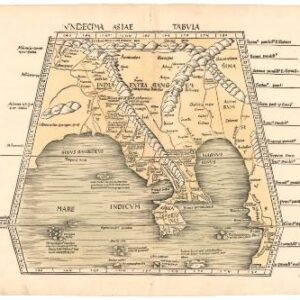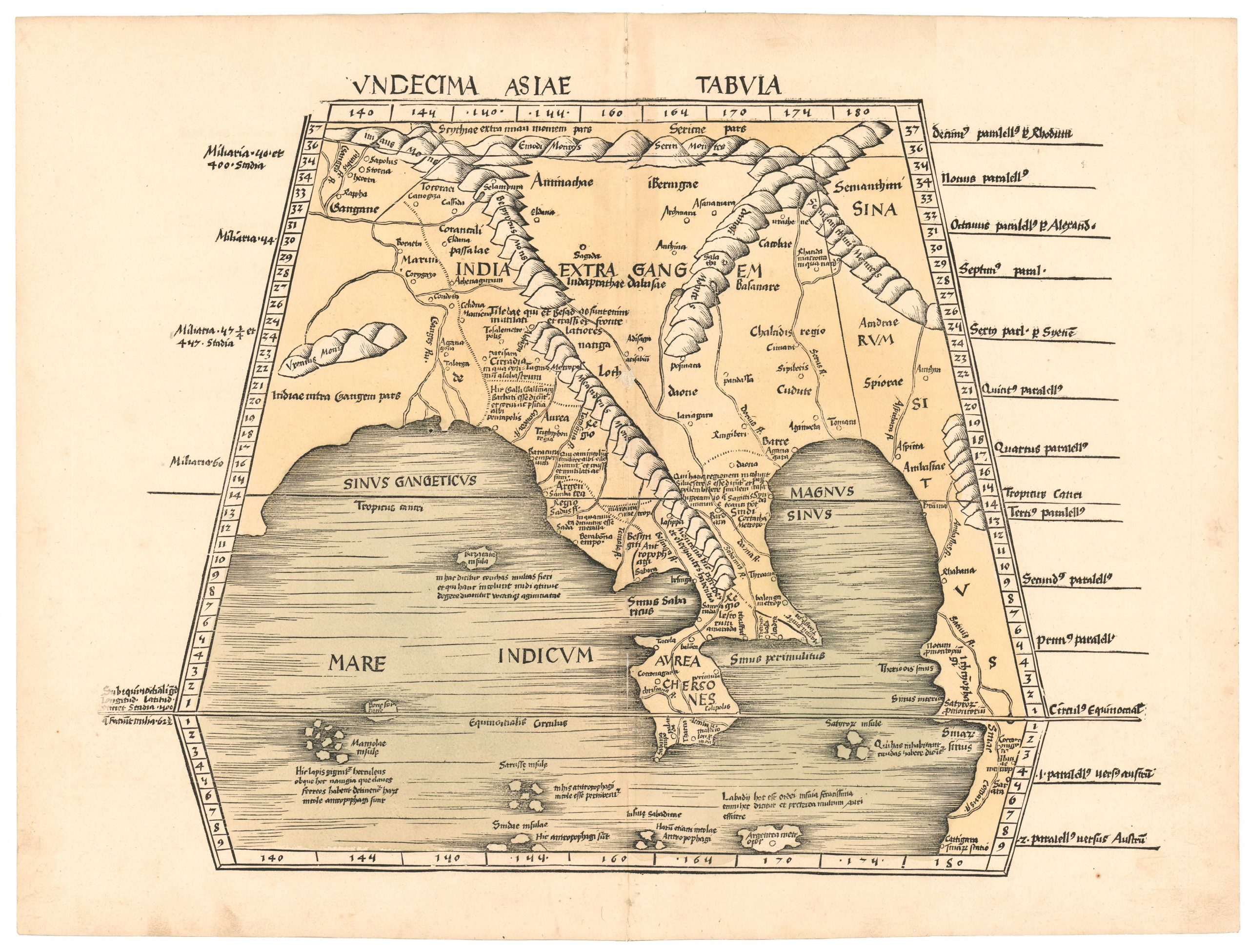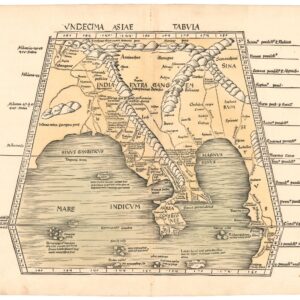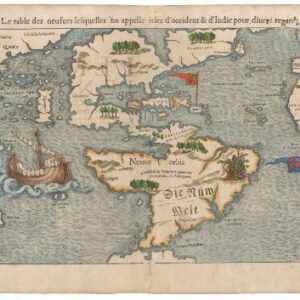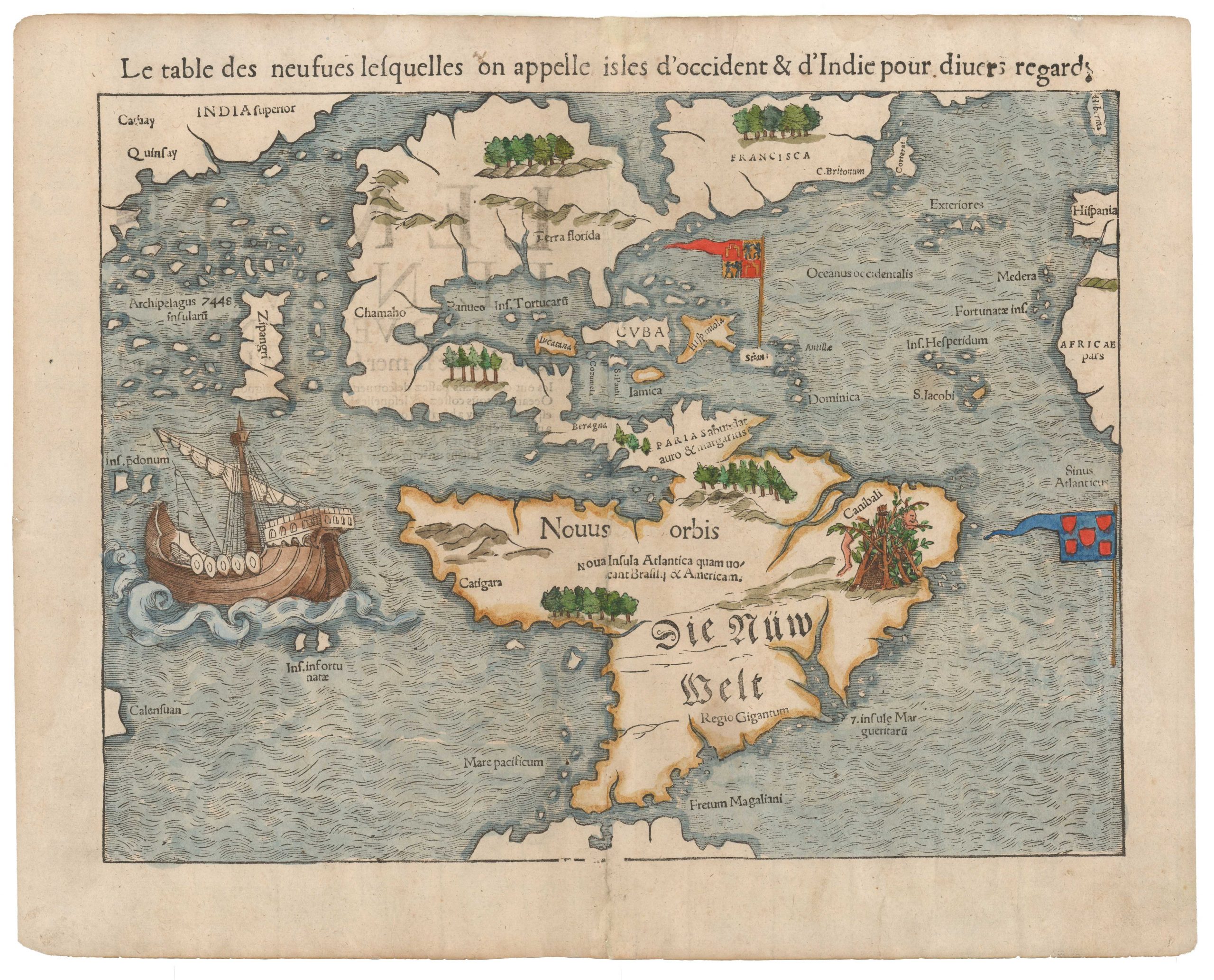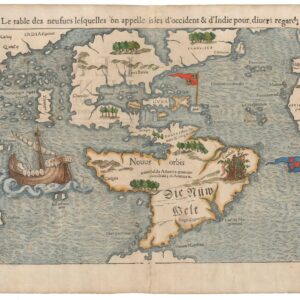A Seminal and Influential Early Map of Africa.
Africa Lybia Morenlandt mit Allen Künigreichen so zu unsern zeiten darin gefunden werden.
$2,000
1 in stock
Description
Sebastian Münster’s map of Africa, first published in 1540 and later included in the 1567 German edition of Cosmographia Universalis, is one of the earliest obtainable printed maps of the continent. This work provides a fascinating glimpse into the geographical knowledge and misconceptions of the 16th century, incorporating both ancient sources, such as Ptolemy, and new information from contemporary explorations.
The map was significantly influenced by Portuguese maritime discoveries, marking one of the earliest printed attempts to depict the full outline of Africa. Key figures in this endeavor included Bartolomeo Dias, who rounded the Cape of Good Hope in 1488, and Vasco da Gama, who reached India by sea in 1498. Münster’s work reflects these breakthroughs, notably featuring a cartouche offering navigational guidance from Hispania to Calicut in India and a vignette of a Portuguese carrack rounding the cape. Both elements underscore the widespread European interest in maritime trade and exploration during the Renaissance.
Illustrations and Mythology
Münster’s map is rich in detailed illustrations and mythical elements, which were common in early Renaissance cartography. In present-day Nigeria and Cameroon, a one-eyed giant (Monoculi) is depicted—a reference to the legendary Cyclopes. Elsewhere, the map features an elephant and tropical birds in Southern Africa, symbolizing the continent’s exotic wildlife. Various kingdoms are identified using crowns and scepters, marking the locations of historical and legendary rulers, including the Nubian kings of Meroë and the mythical Kingdom of Prester John.
Geographical Features
While the map contains inaccuracies by modern standards, it provides valuable insight into the prevailing geographic theories of the 16th century. The Senegal River is depicted looping into the Gulf of Guinea, a course later corrected to reflect the Niger River. The source of the Nile appears as two lakes positioned just north of Ptolemy’s “Mountains of the Moon”, a mythic location often referenced in maps of the era. However, Münster refrains from explicitly labeling them, suggesting a willingness to challenge Ptolemaic authority rather than blindly adhering to ancient traditions.
Historical Impact
Though limited in accuracy, Münster’s map was groundbreaking for its time. It blended empirical observations with mythological and cultural narratives, reflecting both scientific curiosity and artistic storytelling. This map significantly influenced European perceptions of Africa, shaping cartographic traditions for centuries and feeding the Renaissance fascination with the mysteries beyond Europe’s borders.
Publication information
Münster’s Cosmographia was published in multiple editions and languages, broadening its accessibility across Europe. The present example is from the 1567 German edition, printed in Basel.
Cartographer(s):
Sebastian Münster (1488-1552) was a cosmographer and professor of Hebrew who taught at Tübingen, Heidelberg, and Basel. He settled in Basel in 1529 and died there, of the plague, in 1552. Münster was a networking specialist and stood at the center of a large network of scholars from whom he obtained geographic descriptions, maps, and directions.
As a young man, Münster joined the Franciscan order, in which he became a priest. He studied geography at Tübingen, graduating in 1518. Shortly thereafter, he moved to Basel for the first time, where he published a Hebrew grammar, one of the first books in Hebrew published in Germany. In 1521, Münster moved to Heidelberg, where he continued to publish Hebrew texts and the first German books in Aramaic. After converting to Protestantism in 1529, he took over the chair of Hebrew at Basel, where he published his main Hebrew work, a two-volume Old Testament with a Latin translation.
Münster published his first known map, a map of Germany, in 1525. Three years later, he released a treatise on sundials. But it would not be until 1540 that he published his first cartographic tour de force: the Geographia universalis vetus et nova, an updated edition of Ptolemy’s Geography. In addition to the Ptolemaic maps, Münster added 21 modern maps. Among Münster’s innovations was the inclusion of map for each continent, a concept that would influence Abraham Ortelius and other early atlas makers in the decades to come. The Geographia was reprinted in 1542, 1545, and 1552.
Münster’s masterpiece was nevertheless his Cosmographia universalis. First published in 1544, the book was reissued in at least 35 editions by 1628. It was the first German-language description of the world and contained 471 woodcuts and 26 maps over six volumes. The Cosmographia was widely used in the sixteenth and seventeenth centuries and many of its maps were adopted and modified over time, making Münster an influential cornerstone of geographical thought for generations.
Condition Description
Hand color. Visible repairs, as seen on the image. Overall nice.
References
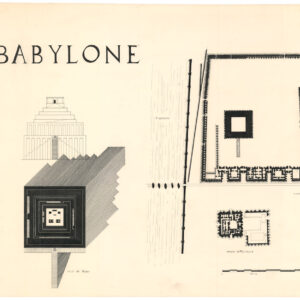
![[South Africa] Photograph panorama of Cape Town, c. 1870](https://neatlinemaps.com/wp-content/uploads/2022/09/Screen-Shot-2022-12-18-at-11.22.15-AM-300x300.png)
